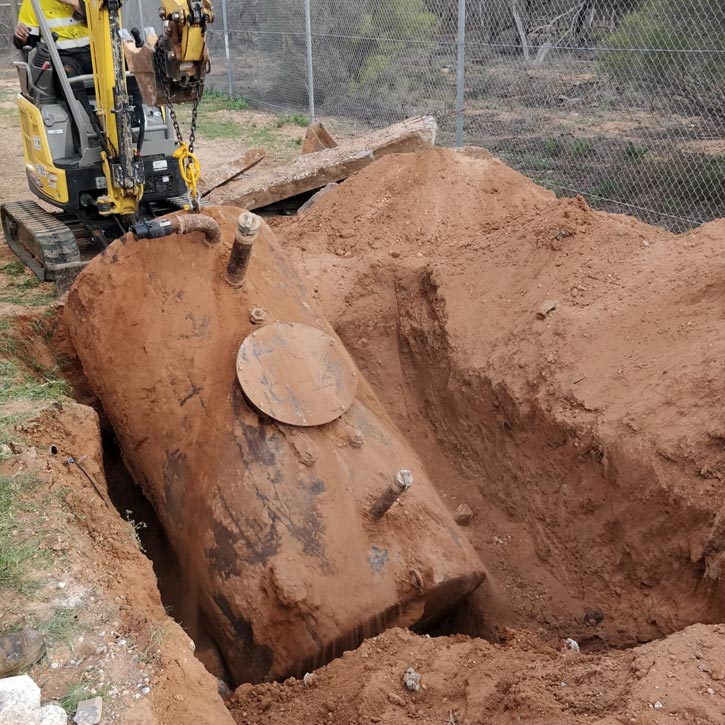LRM Global was requested by the client to conduct an investigation into a leaking 2000 L underground diesel storage tank (UDST) at a remote telecommunications exchange tower near Mildura, VIC. A consultant from LRM Global’s environmental team was deployed to conduct validation sampling of the soils surrounding the diesel tank in order to ascertain the presence of contamination. Upon identifying diesel contamination in both the tank pit sands and surrounding soils, the decision was made to remove the tank in order to prevent further contamination to the site.
Upon excavation the tank was found to be dry with observable punctures on the side and bottom of the UDST, a result of corrosion. Dried diesel residue was also observed on the underside of the tank. A number of samples were collected from the soils around the tank pit in order to determine the degree of contamination. The samples concluded that the onsite soils surrounding the UDST consisted of Category B Contaminated Soil, owing to exceedances of EPA Guidelines for TPH C10-C36. The presence of long hydrocarbon chains typical of diesel products within the soils confirmed that the UDST had acted as a point source for contamination.
In order to ascertain the linear and vertical extent of the contamination plume, validation sampling was conducted. Several soil bores were drilled and sampled in a grid-like pattern around the former UDST to assess the linear delineation of the plume. Once the contaminant plume was linearly delineated an excavation area for the removal of the contaminated material was determined. To assess the required depth of excavation and the vertical delineation of the plume a soil bore was drilled at the location of the former UDST, likely the area of furthest contamination penetration into the subsurface.
The extent of the contamination was observed at a depth of 25 m below ground level. As the contamination was observed to intercept the water table at 20 m, a groundwater monitoring well was constructed in order to assess the groundwater was impacted by the soil contamination. Sampling of the groundwater well concluded that the groundwater consisted of naturally poor quality and that the concentrations of TPH C10-C36 observed in the groundwater did not exceed EPA Guidelines and therefore no further remediation works were required.


